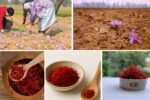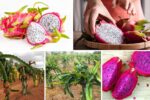Dragon fruit (Hylocereus spp.), also known as pitaya, is a tropical cactus famous for its unique star-shaped fruits, ornamental flowers, and low-maintenance growth habits. While it naturally thrives in tropical and subtropical climates, container gardening allows enthusiasts to grow dragon fruit in limited spaces, indoors, on patios, or balconies. Container gardening not only makes cultivation possible for urban gardeners but also offers better control over soil, water, and sunlight. This guide provides a comprehensive overview of container gardening for dragon fruit, covering container selection, soil preparation, planting, care, and troubleshooting.
1. Why Choose Container Gardening for Dragon Fruit
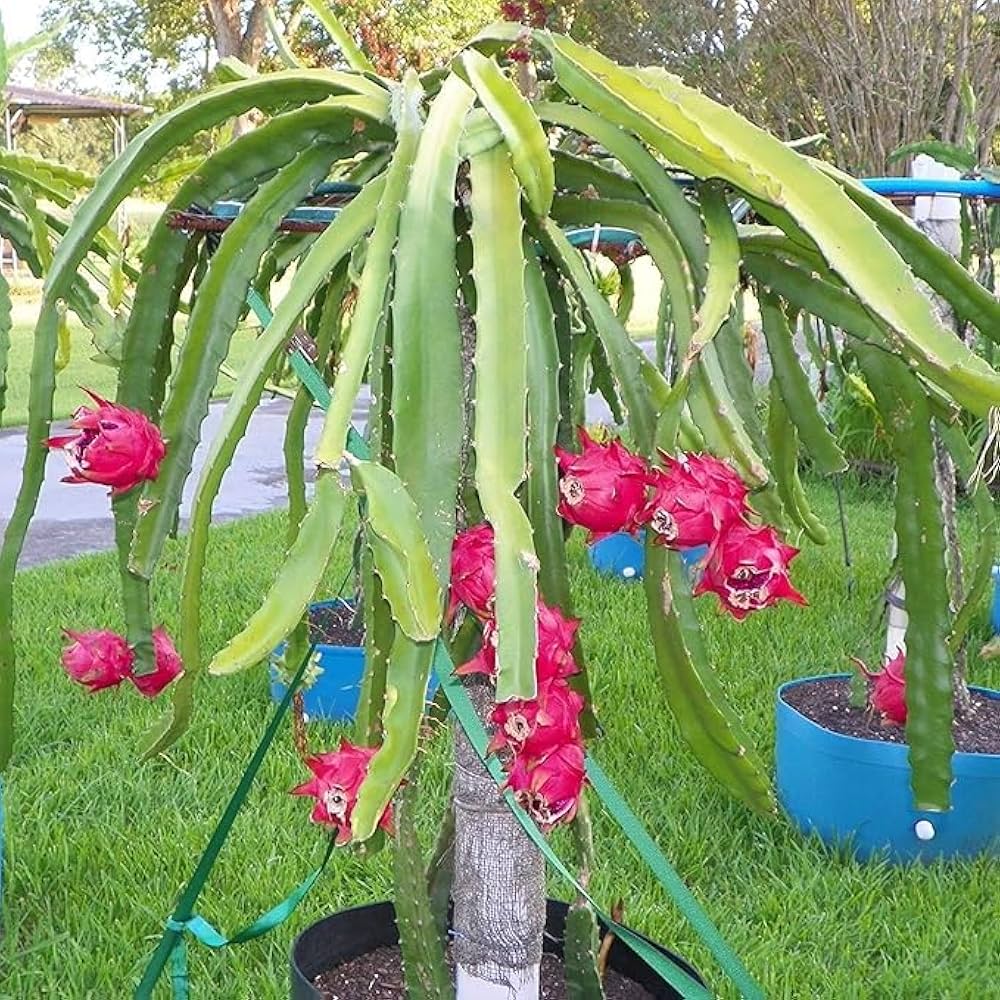
Container gardening offers several advantages for dragon fruit cultivation:
- Space-saving: Perfect for apartments, balconies, patios, or small gardens.
- Mobility: Containers can be moved to maximize sunlight, protect against extreme weather, or optimize temperature.
- Pest and disease control: Elevated containers reduce exposure to ground pests and waterlogging.
- Better soil management: You can customize the soil for optimal drainage and fertility.
By growing dragon fruit in containers, even those living in non-tropical climates can enjoy fresh fruit and ornamental plants throughout the year.
2. Choosing the Right Container
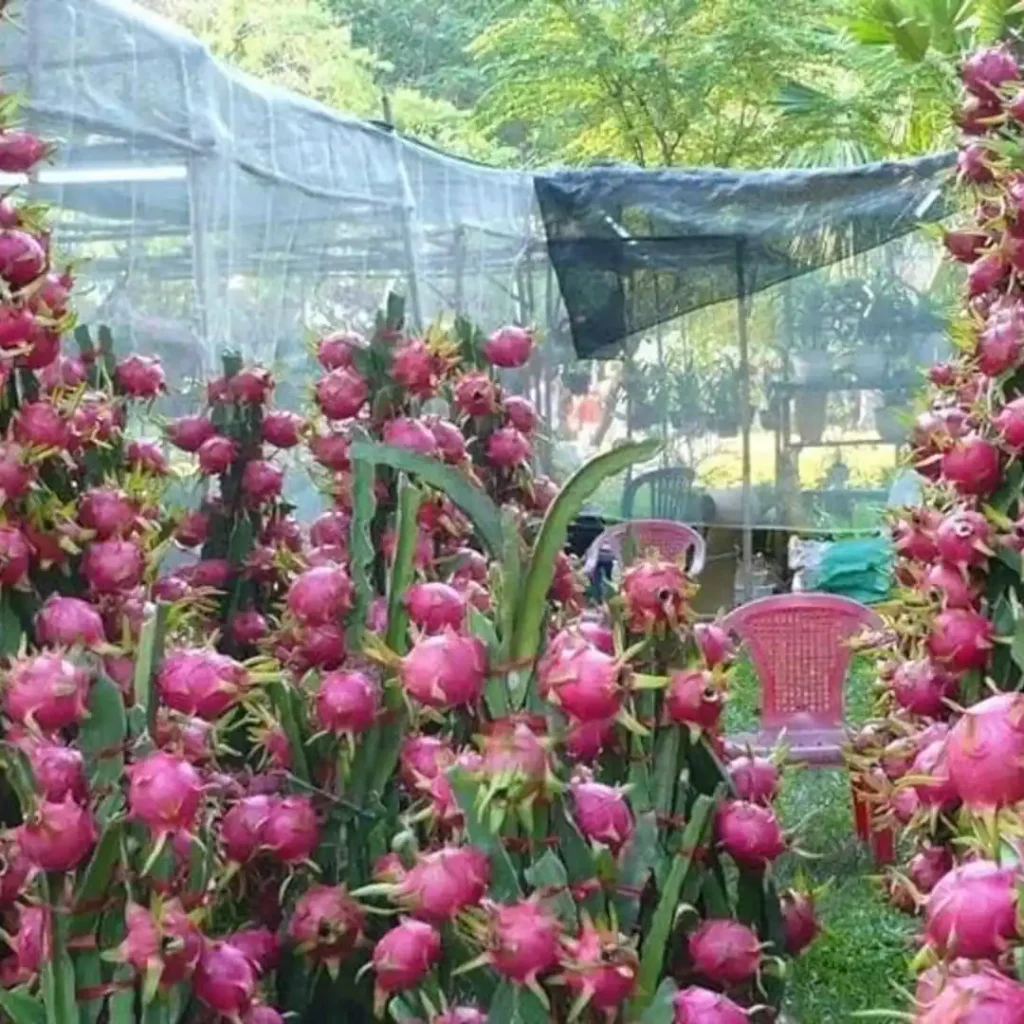
Container selection is critical for healthy growth:
- Size: Start with a 12–16 inch (30–40 cm) diameter pot for young plants. Mature plants may require 18–24 inch (45–60 cm) containers for root expansion.
- Material: Use terracotta, plastic, or ceramic pots with adequate drainage holes. Terracotta is breathable and prevents waterlogging, while plastic retains moisture longer.
- Depth: A minimum 12 inches (30 cm) deep is recommended to accommodate the plant’s root system.
- Support provisions: Container-grown dragon fruit requires vertical support, so ensure the pot can accommodate a trellis or stake.
Tip: Use a saucer under the container to catch excess water while preventing root rot.
3. Selecting the Right Soil Mix
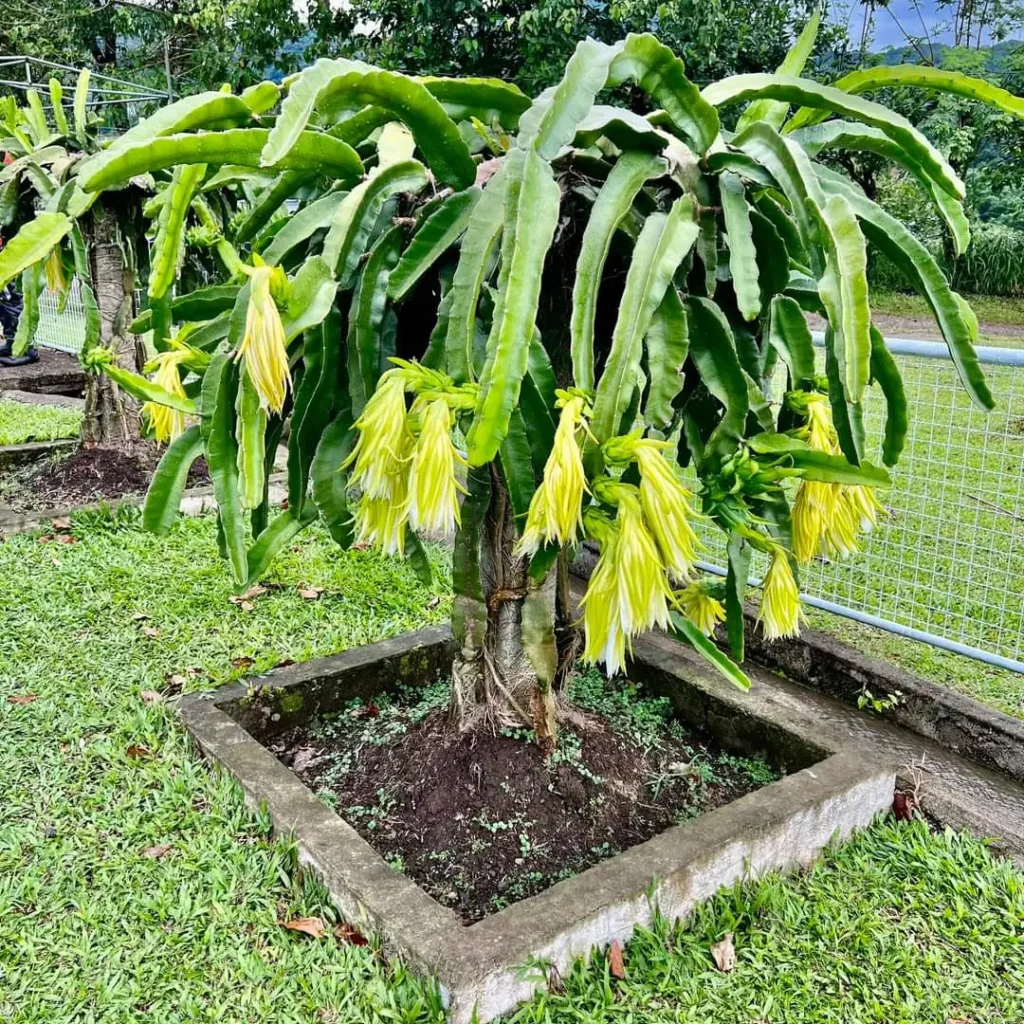
Dragon fruit thrives in well-draining soil that mimics its natural habitat:
- Ideal mix:
- 1 part cactus or succulent potting soil
- 1 part perlite or coarse sand for drainage
- Optional: 1 part compost for nutrients
- pH level: Slightly acidic to neutral (pH 6–7).
- Avoid: Heavy clay soils, which retain too much water and cause root rot.
Tip: Adding a layer of gravel at the bottom improves drainage and prevents water accumulation.
4. Planting Dragon Fruit in Containers
Step-by-step planting:
- Fill the container with the prepared soil mix, leaving 2–3 inches from the rim.
- Plant a cutting or young plant about 2–3 inches deep, ensuring firm soil around the base.
- Insert a vertical stake or trellis to support future growth. Dragon fruit is a climbing cactus and requires structural support for stems.
- Water lightly immediately after planting to settle the soil without waterlogging.
5. Providing Adequate Light
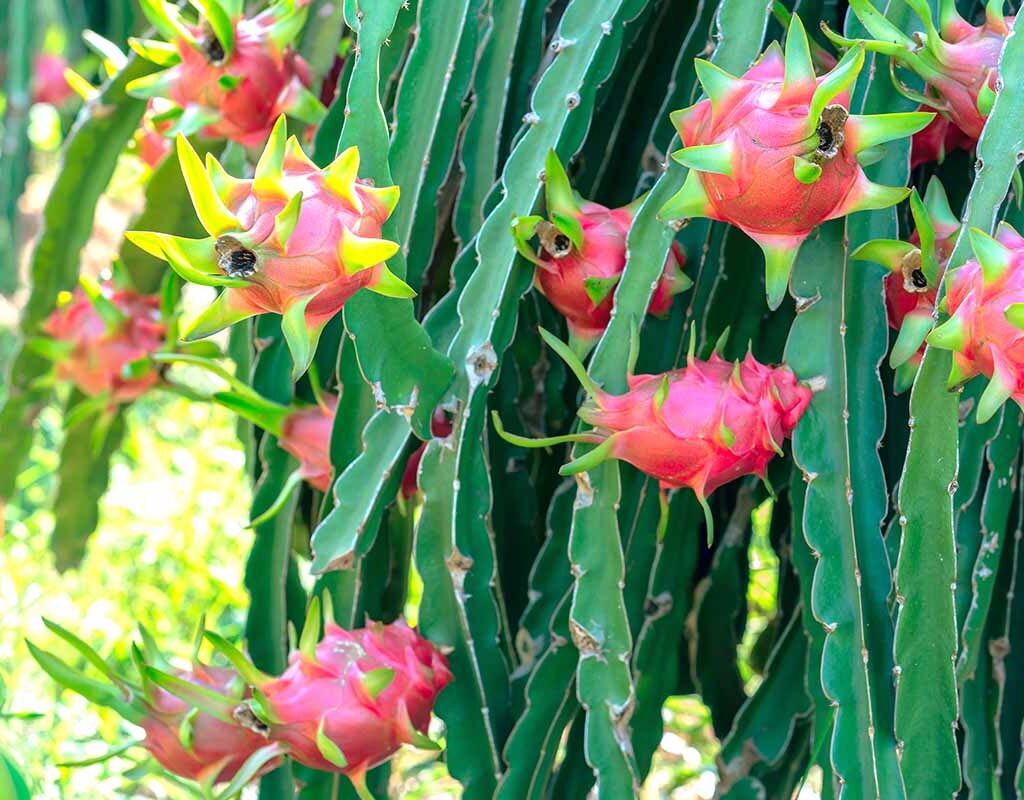
Dragon fruit is a sun-loving plant:
- Full sun: 6–8 hours of sunlight daily is ideal.
- Indoor growth: Place near south-facing windows or use LED grow lights for 12–14 hours daily.
- Excessive heat protection: In extremely hot regions, provide partial shade during peak afternoon hours to prevent stem sunburn.
Tip: Rotate containers periodically to ensure uniform sunlight exposure and prevent leaning stems.
6. Watering Guidelines for Container Plants
Proper watering is crucial to avoid root rot and dehydration:
- Young plants: Water lightly 2–3 times per week, keeping the soil slightly moist.
- Mature plants: Deep watering once or twice a week is sufficient, depending on temperature and humidity.
- Check soil: Always test the top 1–2 inches of soil; water only when dry.
- Drainage: Ensure excess water escapes through holes to prevent soggy roots.
Tip: Mulch the soil surface with straw or coconut husk to retain moisture and regulate soil temperature.
7. Fertilizing Container-Grown Dragon Fruit
Container-grown plants require regular nutrients:
- Balanced fertilizer: Use NPK 10:10:10 or a cactus-specific fertilizer every 4–6 weeks.
- Organic alternatives: Compost tea, worm castings, or diluted fish emulsion can provide nutrients without chemical buildup.
- Flowering and fruiting: Use higher phosphorus and potassium fertilizers to promote blooms and fruit development.
Tip: Avoid over-fertilization, which can damage roots and reduce flowering.
8. Supporting and Training Dragon Fruit
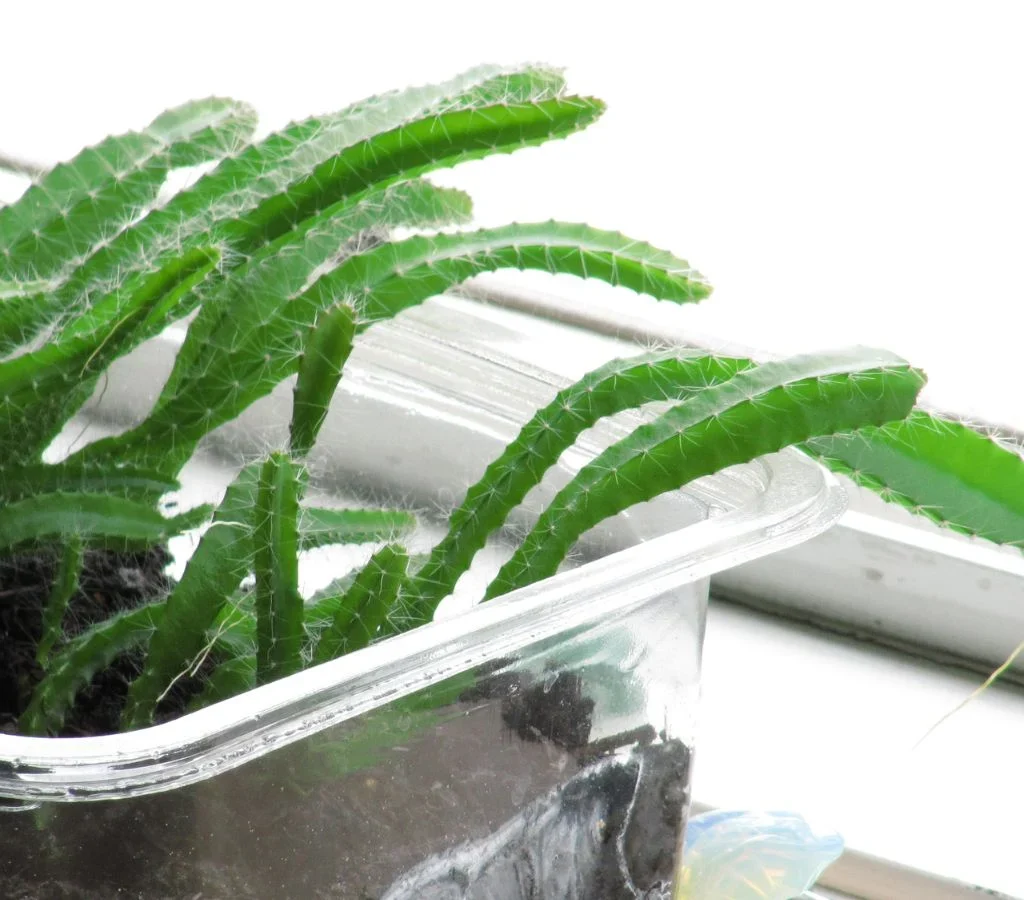
Dragon fruit is a climbing cactus and requires careful structural support:
- Trellises: Vertical trellises or stakes help stems grow upright and reduce breakage.
- Pruning: Remove weak, damaged, or crossing stems to promote healthy growth and flowering.
- Training branches: Allow lateral branches to grow gradually, creating a bushier plant and increasing potential fruiting sites.
Proper training ensures strong stems and maximizes fruit production, especially in limited container space.
9. Flowering and Pollination
Dragon fruit flowers are nocturnal and require specific care:
- Flowering age: Container-grown dragon fruit may flower 6–12 months after planting, depending on light, temperature, and plant health.
- Pollination: Hand pollination may be necessary indoors. Use a soft brush to transfer pollen between flowers.
- Fruit development: Fruits typically mature in 30–50 days after successful pollination.
Tip: Flower buds may drop if the plant experiences stress, such as inconsistent watering, insufficient light, or nutrient deficiency.
10. Common Challenges in Container Gardening
A. Root Rot
- Cause: Overwatering or poor drainage.
- Solution: Ensure containers have drainage holes, use well-draining soil, and water moderately.
B. Pests
- Common pests: Mealybugs, aphids, and spider mites.
- Solution: Regularly inspect stems, use neem oil or insecticidal soap, and maintain air circulation.
C. Stem Etiolation
- Cause: Insufficient sunlight.
- Solution: Increase light exposure or add supplemental grow lights.
D. Limited Growth
- Cause: Container too small or nutrient deficiency.
- Solution: Repot in a larger container and provide balanced fertilization.
11. Seasonal Care for Container Dragon Fruit
- Spring/Summer: Active growth and flowering. Water deeply, provide full sunlight, and fertilize regularly.
- Autumn: Harvest fruits and reduce nitrogen-rich fertilizers to focus on fruit ripening.
- Winter: Growth slows; reduce watering and maintain temperature above 15°C (59°F). Indoor plants may need supplemental light.
12. Benefits of Container Dragon Fruit Gardening
- Urban gardening solution: Enables fruit cultivation in apartments and small spaces.
- Aesthetic value: Dramatic flowers and climbing stems enhance indoor and balcony décor.
- Year-round production: Controlled conditions allow continuous growth and flowering.
- Control over environment: Easier management of water, nutrients, and pests.
13. Conclusion
Container gardening allows gardeners to grow dragon fruit successfully regardless of climate or outdoor space limitations. By carefully selecting containers, preparing well-draining soil, providing adequate sunlight, and managing water and nutrients, container-grown dragon fruit can thrive and produce vibrant flowers and delicious fruits. With proper support, pruning, and care, container gardening transforms limited spaces into productive tropical fruit gardens, offering both aesthetic appeal and a sustainable source of fresh dragon fruit.

